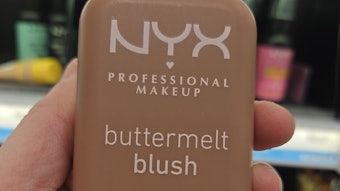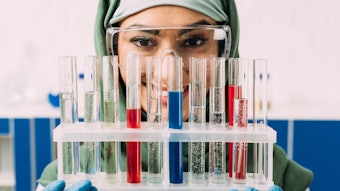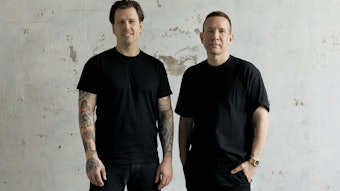
The consumer desire for naturally healthy-looking hair is a constant that has remained an undercurrent through the many trends affecting the hair care market over the years. The need to deliver shine, softness and ease of styling to hair demands the use of conditioning agents that moisturize, plasticize, repair and protect the hair. The performance benefits of both animal and plant-based protein biopolymers have been known to personal care formulators for decades. Among the many applications for these naturally-derived ingredients, proteins have the ability to impart a multitude of conditioning benefits to hair because of the close similarity of their chemical composition to that of the hair.
Proteins are found in all living cells, both plant and animal, and serve necessary functions in all biological processes. The most basic component of proteins, amino acids, are organic compounds that form amide bonds to create peptides. Larger chains of these peptides are called polypeptides; these either alone or linked together are what we call proteins. Hair fibers are largely composed of keratin proteins that contribute to strength and flexibility. This makes proteins and amino acids ideally suited for use in hair care products because of their close match in chemical structure with the hair fiber.
The function of proteins in hair care is largely dependent upon the size of the molecules and whether they pass into to the hair’s cortex or remain on the surface. Proteins with low molecular weights are small enough to penetrate the hair cuticle to deliver moisturizing benefits within the hair itself, while those with higher molecular weights have film-forming attributes that can repair and protect the cuticle. Recent advances in the study of proteins (proteomics) has enabled the selection and creation of high molecular weight proteins that specifically replicate those found naturally in the hair to create biomimetic replacement treatments for damaged hair.
Moisturization Protein
Generally, the consumer’s primary requirement of a conditioning product is that it adds moisture to the hair. The chemical composition of hair requires a balance of protein and water to maintain structure and flexibility. Too little water within the hair fiber results in brittleness and a higher level of breakage, while too much water within the hair can cause the cortex to swell to the point of lifting cuticles and causing a roughened, dull surface. Because hair is subjected to cleansing, styling, coloring and environmental conditions that can pull out moisture and leave it dry, fragile and difficult to comb and style, replenishing and managing the hair’s moisture level is the most basic provision of a conditioner.
As previously mentioned, proteins with low molecular weights are able to penetrate the hair cuticle to deliver moisturizing benefits to the inner cortex of the hair fiber. With a molecular weight of 750, Hydrosolanum™ (INCI: Hydrolyzed Vegetable Protein) enters the hair strand and its hydrophilic groups work from within the fiber to bind water molecules, providing deep moisturization to reduce hair fiber brittleness and formation of split ends.
Additionally, the specific mechanism by which Hydrosolanum moisturizes the hair enables it to regulate the moisture levels within the hair relative to environmental humidity levels, as shown with the Hydration Protection Index (HPI) in Figure 1. In this way, the moisture binding properties of this ingredient ensure that the hair retains enough moisture to remain flexible but not so much that it becomes over-plasticized and limp, thus ensuring healthy-looking style retention. Incorporating a low molecular weight biopolymer with water-binding properties, such as Hydrosolanum, into a conditioning product is an effective, tried and true method of delivering long-lasting moisture management to restore hair to a healthier state.
Strengthening Protein
Healthy hair is resistant to breakage because it demonstrates flexibility within its cortex as well as maintaining cuticle integrity. Through daily grooming and styling, hair is subjected to tensile forces, bending stresses and cuticle abrasion that ultimately cause a weakening of the hair fiber itself in addition to damaging the cuticle layer.
Increasing the strength of the hair is a two-fold strategy that must address both its inner flexibility along with the integrity of its surface layer. With an intermediate-range molecular weight of 1800, Keravis™ (INCI: Hydrolyzed Vegetable Protein PG-Propyl Silanetriol) addresses both of these issues by simultaneously penetrating the hair shaft to optimize moisture content and plasticity of the hair, while also forming a cross-linking film that coats the hair to lubricate, protect and reinforce the cuticle. Hair treated with the Keravis strengthening active shows a proven increase in hair strength as seen in Figure 2. This benefit is also realized from rinse-off systems. By adding this dual-action strengthening component to conditioning formulas, treated hair can demonstrate the increased resilience, flexibility and reduced breakage seen in healthy hair.
Protection and Repair Proteins
Because hair is continually subjected to various forms of damage from sources such as styling and the environment, conditioning treatments that offer multi-functional benefits including damage prevention and repair are the next logical step in hair conditioning formulas.
Heat styling is a top contributor of cuticle damage, causing blistering, cracking, lifting and abrasion. The high molecular weight of 50,000 and complex polymeric structure of Crodasone™ W (INCI: Hydrolyzed Wheat Protein PG-Propyl Silanetriol) cause the formation of a heat-activated cross-linking film on the hair surface when drying. This polymeric film offers sacrificial thermal protection and is also able to repair decemented cuticles post damage. It is effective, even in rinse-off systems. Hair treated with Crodasone W is able to resist cuticle cracking when subjected to heat styling, as demonstrated in Figure 3.
Another protein with a unique ability to repair the hair surface is Keramimic™ 2.0 (INCI: Laurdimonium Hydroxypropyl Hydrolyzed Keratin, molecular weight 1000 Da). As shown in Figure 4, this keratin protein is attracted to and deposits on the most heavily damaged areas of the hair surface, targeting the hair tips, which are the most damaged portions of the hair fiber, and restoring healthy properties to even the most damaged hair. The amino acid sequences of this biomimetic keratin have been actively selected to replicate those naturally found in human hair cuticles using proteomics, a powerful method of identifying a protein’s ‘fingerprint’ spectrum and characterizing the detailed composition of individual peptide chains. Unlike standard keratin proteins, Keramimic 2.0 closely resembles that of human hair cuticles, offering the closest possible biomimetic solution for hair care products.
Croda offers a multitude of protein biopolymers, amino acids and functionalized proteins for a wide variety of personal care applications. To learn more, visit www.croda.com/na/pc.
Disclaimer:
The above paid-for content was produced by and posted on behalf of the Sponsor. Content provided is generated solely by the Sponsor or its affiliates, and it is the Sponsor’s responsibility for the accuracy, completeness and validity of all information included. Cosmetics & Toiletries takes steps to ensure that you will not confuse sponsored content with content produced by Cosmetics & Toiletries and governed by its editorial policy.










